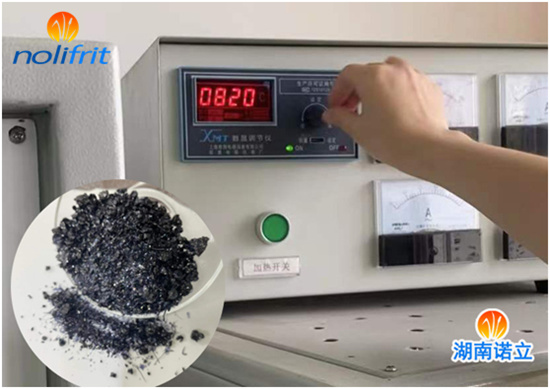Why Does Enamel Need To Be Fired To 800℃?
The firing temperature of enamel products mainly depends on the use of the product, the material of the body and the variety of enamel frit used. An important factor affecting the firing temperature of enamel is the type and performance of the enamel. Most enamel products are fired. The temperature can only be selected within the temperature range specified by the type of enamel frit.
Usually, the firing temperature of enamel frit is about 800℃ or lower, cast iron enamel frit is 740~780℃, and steel plate enamel ground coat is 760~860℃, among which low temperature ground coat is mostly used for black glossy primary enamel products. Titanium enamel is generally at 800~840℃, and antimony enamel is at 840~860℃.

If the furnace temperature is too high when the enamel products are fired, and the heating rate of the powder is too fast, it will cause the disadvantages of external boiling and endogenous or even coke endogenous, and it will also lead to imperfect physical and chemical reactions of the enamel frit, poor adhesion, and cold explosion. Pores appear in the enamel layer, thus affecting the physical and chemical properties of enamel products such as acid resistance and gloss.
If the furnace temperature is too low during firing, the temperature difference between the inside and outside of the enamel product will be reduced, but the melt viscosity on the surface of the final enamel layer is relatively large, the bubbles in the enamel layer are not easy to escape, and the cobalt and nickel adhesives are deposited at the interface between the iron blank and the ground coat. The speed and the dissolution, diffusion and penetration reaction of FeO are slow, and there will be defects such as poor adhesion, explosion points, black lines, and wire mesh bubbles. At the same time, because the powder layer cannot be completely melted, the porcelain surface is rough, and the gloss, temperature resistance and chemical stability are relatively poor.